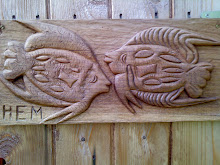Jesus died on Friday, April 3, 33AD, according to an investigation which matches his death to an earthquake.
The investigation, from the International Geology Review, looked at earthquake activity around the Dead Sea, which is around 13 miles from Jerusalem.
The Gospel of Matthew, Chapter 27, says that as Jesus lay dying on the cross, an earthquake shook the area, scattering graves and making the sky go dark.

Now researchers have looked at textual accounts, geological records and astronomical data to find the most likely date for Jesus's death.
Geologist Jefferson Williams of Supersonic Geophysical, and colleagues from the German Research Center for Geosciences, studied soil samples from the beach of Ein Gedi Spa, next to the Dead Sea.
Researching the deeper layers of the soil, two earthquakes were detected by looking at the layers of built-up sediment, called varves, which built up each year. A widespread earthquake is known to have happened in 31BC, and another one was detected which must have occured between 26AD and 36AD.
Williams told Discovery that the latter earthquake occurred during 'the years when Pontius Pilate was procurator of Judea and when the earthquake of the Gospel of Matthew is historically constrained.'
He said the the day and date of the crucifixion are known with a fair degree of precision - but the year has been in question.
However, putting the jigsaw together, Williams said the clues were:

One other clue in the gospels may also support this theory - three of the four canonical gospels report darkness from midday to 3pm on the day after the crucifixion.
Williams told Discovery that this could have been caused by a dust storm - and now he is searching the soil samples to see if he can find evidence of this as well.
Read more: Published by: Daily Mail
Source
The investigation, from the International Geology Review, looked at earthquake activity around the Dead Sea, which is around 13 miles from Jerusalem.
The Gospel of Matthew, Chapter 27, says that as Jesus lay dying on the cross, an earthquake shook the area, scattering graves and making the sky go dark.
Hieronymus Bosch' painting of The Crucifixion of Jesus Christ (c. 1500)
Geologist Jefferson Williams of Supersonic Geophysical, and colleagues from the German Research Center for Geosciences, studied soil samples from the beach of Ein Gedi Spa, next to the Dead Sea.
Researching the deeper layers of the soil, two earthquakes were detected by looking at the layers of built-up sediment, called varves, which built up each year. A widespread earthquake is known to have happened in 31BC, and another one was detected which must have occured between 26AD and 36AD.
The Gospel of Matthew:
"Jesus, when he had cried again with a loud voice, yielded up the ghost. And, behold, the veil of the temple was rent in twain from the top to the bottom; and the earth did quake, and the rocks rent; And the graves were opened; and many bodies of the saints which slept arose, And came out of the graves after his resurrection, and went into the holy city, and appeared unto many. Now when the centurion, and they that were with him, watching Jesus, saw the earthquake, and those things that were done, they feared greatly, saying, Truly this was the Son of God."He said the the day and date of the crucifixion are known with a fair degree of precision - but the year has been in question.
However, putting the jigsaw together, Williams said the clues were:
- All four gospels and Tacitus in Annals (XV,44) agree that the crucifixion occurred when Pontius Pilate was procurator of Judea from 26-36 AD
- All four gospels say the crucifixion occurred on a Friday
- All four gospels agree that Jesus died a few hours before the beginning of the Jewish Sabbath (nightfall on a Friday)
- The synoptic gospels (Matthew, Mark, and Luke) indicate that Jesus died before nightfall on the 14th day of Nisan; right before the start of the Passover meal
- John’s gospel differs from the 'Synoptic Gospels'; apparently indicating that Jesus died before nightfall on the 15th day of Nisan
The coast of the Dead Sea - clues under the ground help identify when and where earthquakes happened
Williams told Discovery that this could have been caused by a dust storm - and now he is searching the soil samples to see if he can find evidence of this as well.
Read more: Published by: Daily Mail
Source

No comments:
Post a Comment
Everyone has a right to be heard.
Everyone has a right to an opinion.
We are all stakeholders, even the silent among us.
No single person has all the answers but together we might answer some of the questions.
Remember, this mortal life is but the blink of an eye in the realms of eternity.